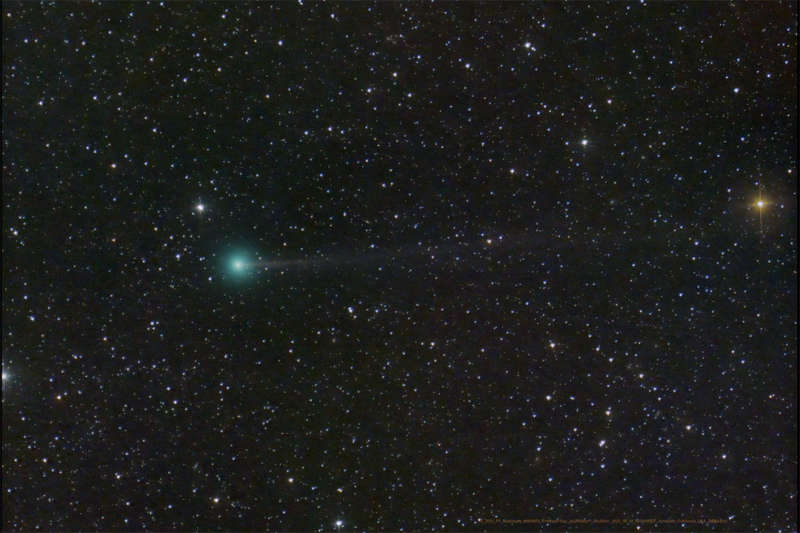
|
Credit & Copyright: Dan Bartlett
Explanation:
Will Comet Nishimura become visible to the unaided eye?
Given the unpredictability of comets, no one can say for sure,
but it currently seems like a good bet.
The comet was
discovered only ten days ago by Hideo Nishimura
during 30-second exposures with a standard digital camera.
Since then,
C/2023
P1 Nishimura has increased in brightness and
its path across the inner
Solar System determined.
As the comet dives toward the Sun, it will surely continue to
intensify and possibly become a naked-eye object in early September.
A problem is that
the
comet will also be angularly near the Sun,
so it will only be possible to see it
near sunset or sunrise.
The comet will get so
close to the Sun -- inside the orbit of
planet Mercury --
that its nucleus may
break up.
Pictured,
Comet Nishimura was imaged three days ago from
June Lake,
California,
USA
while sporting a green coma and a thin tail.
|
January February March April May June July August September October November December |
| ||||||||||||||||||||||||||||||||||||||||||||||||
NASA Web Site Statements, Warnings, and Disclaimers
NASA Official: Jay Norris. Specific rights apply.
A service of: LHEA at NASA / GSFC
& Michigan Tech. U.
Based on Astronomy Picture
Of the Day
Publications with keywords: comet
Publications with words: comet
See also:
- APOD: 2025 November 17 Á Comet Lemmons Wandering Tail
- APOD: 2025 September 30 Á Comet Lemmon Brightens
- APOD: 2025 September 29 Á Two Camera Comets in One Sky
- APOD: 2025 September 26 Á A SWAN an ATLAS and Mars
- APOD: 2025 September 18 Á Comet C/2025 R2 SWAN
- APOD: 2025 September 16 Á New Comet SWAN25B over Mexico
- APOD: 2025 July 7 Á Interstellar Comet 3I ATLAS
